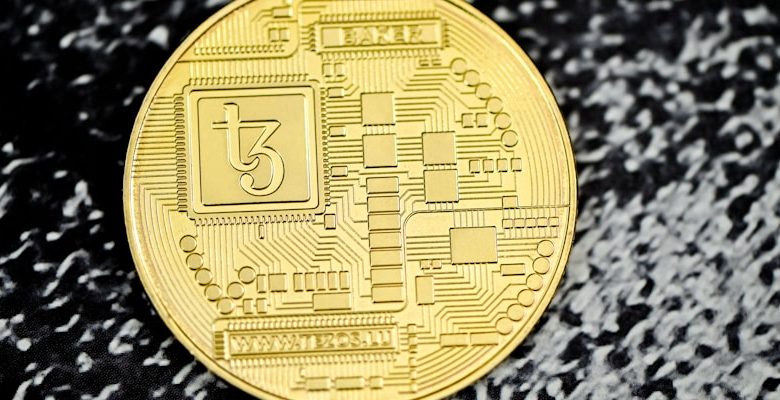What is Tokenization? How It’s Transforming Assets on the Blockchain

- Understanding Tokenization and its Impact on Assets
- The Rise of Tokenization in the Blockchain Era
- Exploring the Benefits of Tokenizing Assets
- Tokenization: Revolutionizing Ownership on the Blockchain
- How Tokenization is Reshaping the Investment Landscape
- The Future of Assets: A Tokenized World
Understanding Tokenization and its Impact on Assets
Tokenization is a process where real-world assets are converted into digital tokens on a blockchain. These tokens represent ownership of the underlying asset and can be traded or transferred easily on the blockchain. Tokenization has revolutionized the way assets are managed and transacted, bringing increased liquidity and accessibility to a wide range of assets.
One of the key benefits of tokenization is the fractional ownership it enables. Investors can purchase a fraction of an asset, allowing them to diversify their portfolio without having to buy the entire asset. This opens up investment opportunities to a wider audience, including retail investors who may not have had access to certain assets in the past.
Tokenization also streamlines the process of buying and selling assets, reducing the need for intermediaries and paperwork. Transactions can be completed quickly and securely on the blockchain, providing transparency and efficiency to all parties involved. This has the potential to lower costs and increase the speed of asset transactions.
Furthermore, tokenization has the potential to unlock illiquid assets, such as real estate or fine art, by breaking them down into tradable tokens. This can help asset owners access liquidity and reach a broader market of potential buyers. It also allows investors to diversify their portfolios with a wider range of assets, reducing risk and increasing potential returns.
In conclusion, tokenization is transforming the way assets are managed and transacted by bringing increased liquidity, accessibility, and efficiency to the market. As more assets are tokenized, we can expect to see a shift in the traditional asset management landscape towards a more digitized and decentralized future.
The Rise of Tokenization in the Blockchain Era
Tokenization has been rapidly gaining traction in the blockchain era as a way to represent real-world assets digitally. This process involves converting physical assets into digital tokens that can be stored and traded on a blockchain network. The rise of tokenization has opened up new possibilities for fractional ownership of assets, enabling investors to own a portion of high-value assets that were previously out of reach.
One of the key benefits of tokenization is its ability to increase liquidity in traditionally illiquid markets. By breaking down assets into smaller, tradeable tokens, investors can buy and sell fractions of assets without the need for traditional intermediaries. This has the potential to democratize access to investment opportunities and unlock value in a wide range of asset classes, from real estate to fine art.
Moreover, tokenization can also streamline the process of asset issuance and management. Through smart contracts on the blockchain, issuers can automate tasks such as dividend payments, voting rights, and compliance requirements. This reduces the need for manual intervention and lowers the costs associated with asset management, making it more efficient and transparent for all parties involved.
Overall, the rise of tokenization in the blockchain era signifies a shift towards a more inclusive and efficient financial system. By digitizing assets and enabling fractional ownership, tokenization has the potential to revolutionize the way we invest in and manage assets, creating new opportunities for investors and issuers alike. As the technology continues to evolve and mature, we can expect to see tokenization play an increasingly important role in shaping the future of finance.
Exploring the Benefits of Tokenizing Assets
Tokenizing assets offers a wide range of benefits that can revolutionize the way we manage and trade assets. By converting traditional assets into digital tokens, individuals and institutions alike can enjoy increased liquidity, reduced transaction costs, improved accessibility, and enhanced transparency.
One of the key advantages of tokenization is the ability to fractionalize assets, allowing investors to own a smaller portion of high-value assets that were previously out of reach. This democratization of investment opportunities opens up new possibilities for diversification and risk management.
Tokenization also streamlines the trading process, enabling faster settlement times and reduced paperwork. With assets represented as tokens on the blockchain, transactions can be conducted seamlessly and securely, eliminating the need for intermediaries and reducing the risk of fraud.
Additionally, tokenization enhances transparency by providing a clear record of ownership and transaction history. This increased visibility can help to build trust among investors and regulators, leading to a more efficient and compliant market ecosystem.
Overall, the benefits of tokenizing assets are vast and transformative. As blockchain technology continues to evolve, the potential for tokenization to reshape the way we think about assets and investments is truly exciting.
Tokenization: Revolutionizing Ownership on the Blockchain
Tokenization is a groundbreaking concept that is revolutionizing ownership on the blockchain. It involves representing real-world assets as digital tokens on a blockchain network, allowing for fractional ownership and increased liquidity.
Through tokenization, assets such as real estate, art, commodities, and even intellectual property can be divided into smaller units that can be bought, sold, and traded on a blockchain platform. This opens up new opportunities for investors to access asset classes that were previously out of reach.
One of the key advantages of tokenization is the increased transparency and security it provides. By recording ownership information on a distributed ledger, blockchain technology ensures that transactions are secure, immutable, and easily traceable. This reduces the risk of fraud and enhances trust among participants.
Furthermore, tokenization eliminates many of the traditional barriers to asset ownership, such as high costs, lack of liquidity, and inefficient processes. By digitizing assets and making them easily tradable, tokenization democratizes access to investment opportunities and unlocks value for a broader range of investors.
Overall, tokenization is reshaping the way we think about ownership and investment. By leveraging blockchain technology to tokenize assets, we are entering a new era of democratized finance where ownership is more accessible, transparent, and secure than ever before.
How Tokenization is Reshaping the Investment Landscape
Tokenization is revolutionizing the way investments are made by leveraging blockchain technology to represent assets digitally. This process involves converting real-world assets, such as real estate or fine art, into digital tokens that can be traded on a blockchain platform. By tokenizing assets, investors can access a broader range of investment opportunities, fractionalize ownership, and benefit from increased liquidity.
One of the key ways in which tokenization is reshaping the investment landscape is by democratizing access to traditionally exclusive asset classes. Through fractional ownership enabled by tokenization, investors can now participate in assets that were previously out of reach due to high barriers to entry. This opens up new avenues for diversification and potentially higher returns on investment.
Furthermore, tokenization enhances liquidity in the investment market by allowing for the seamless transfer of assets through blockchain technology. This increased liquidity can lead to faster transactions, lower costs, and improved transparency in the investment process. As a result, investors can more easily buy and sell their assets, reducing the time and effort required to manage their investment portfolios.
Overall, tokenization is transforming the traditional investment landscape by making it more accessible, efficient, and transparent. As blockchain technology continues to evolve, the potential for tokenization to disrupt the way assets are bought, sold, and traded is immense. Investors and asset owners alike stand to benefit from the advantages offered by tokenization in the digital age.
The Future of Assets: A Tokenized World
Tokenization is revolutionizing the way we perceive and manage assets. The future of assets lies in a tokenized world, where traditional assets like real estate, art, and even stocks are represented as digital tokens on the blockchain. This shift towards tokenization offers several benefits such as increased liquidity, fractional ownership, and enhanced security.
By tokenizing assets, investors can now own fractions of high-value assets that were previously out of reach. This democratization of assets opens up new investment opportunities for a wider range of investors. Additionally, tokenization allows for the seamless transfer of ownership, reducing the need for intermediaries and streamlining the asset trading process.
Moreover, tokenization enhances security by leveraging blockchain technology to create immutable records of ownership. This transparency and traceability reduce the risk of fraud and ensure compliance with regulatory requirements. As a result, tokenized assets offer a level of trust and security that traditional asset ownership cannot match.



